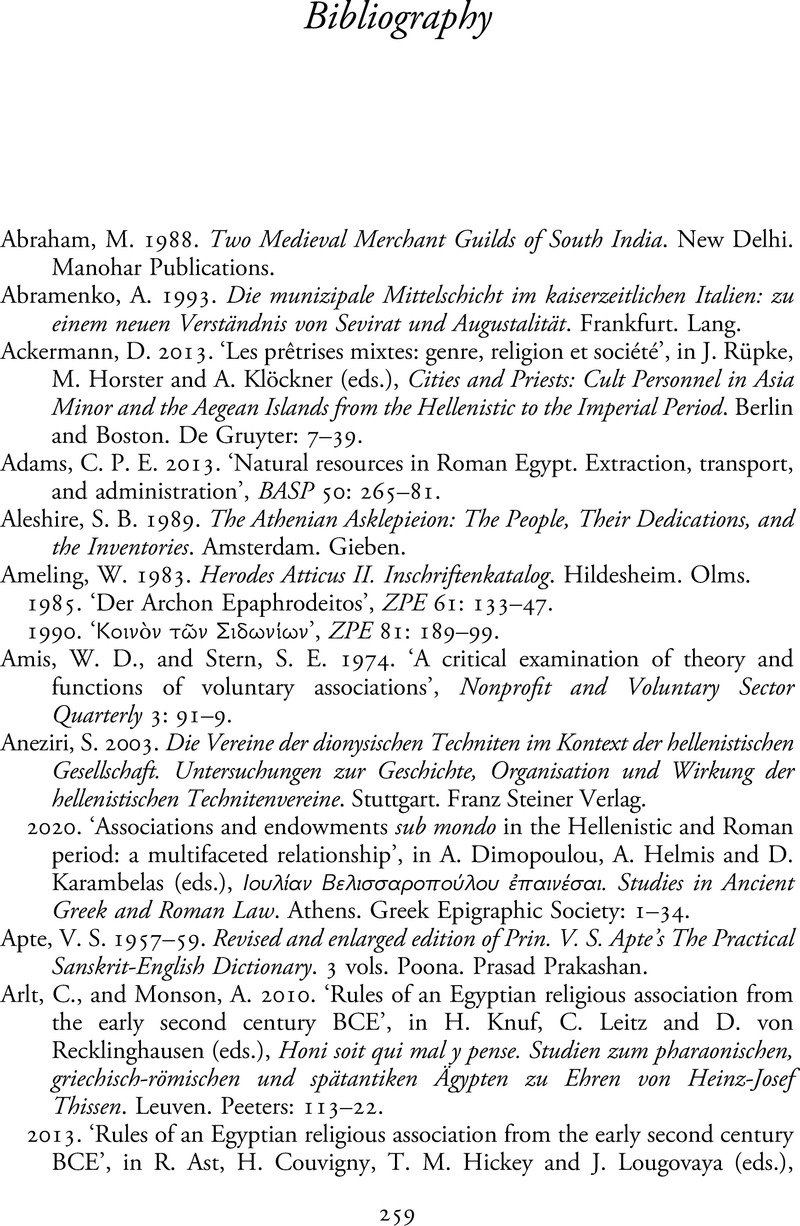Book contents
- Private Associations in the Ancient Greek World
- Private Associations in the Ancient Greek World
- Copyright page
- Contents
- Tables
- Contributors
- Preface
- Abbreviations
- Chapter 1 Associations’ Regulations from the Ancient Greek World and Beyond
- Chapter 2 Admission Procedures and Financial Contributions in Private Associations
- Chapter 3 Regulations on Absence and Obligatory Participation in Ancient Associations
- Chapter 4 The Place of Purity
- Chapter 5 Associations and Place
- Chapter 6 Greek thorybos, Roman eustatheia
- Chapter 7 Private Affairs in a Public Domain
- Chapter 8 A World Full of Associations
- Chapter 9 Ordo corporatorum
- Chapter 10 Rules and Regulations of Associations
- Chapter 11 Conclusion
- Bibliography
- Subject Index
- Index Locorum
- References
Bibliography
- Private Associations in the Ancient Greek World
- Private Associations in the Ancient Greek World
- Copyright page
- Contents
- Tables
- Contributors
- Preface
- Abbreviations
- Chapter 1 Associations’ Regulations from the Ancient Greek World and Beyond
- Chapter 2 Admission Procedures and Financial Contributions in Private Associations
- Chapter 3 Regulations on Absence and Obligatory Participation in Ancient Associations
- Chapter 4 The Place of Purity
- Chapter 5 Associations and Place
- Chapter 6 Greek thorybos, Roman eustatheia
- Chapter 7 Private Affairs in a Public Domain
- Chapter 8 A World Full of Associations
- Chapter 9 Ordo corporatorum
- Chapter 10 Rules and Regulations of Associations
- Chapter 11 Conclusion
- Bibliography
- Subject Index
- Index Locorum
- References
Summary

- Type
- Chapter
- Information
- Private Associations in the Ancient Greek World , pp. 259 - 287Publisher: Cambridge University PressPrint publication year: 2021

